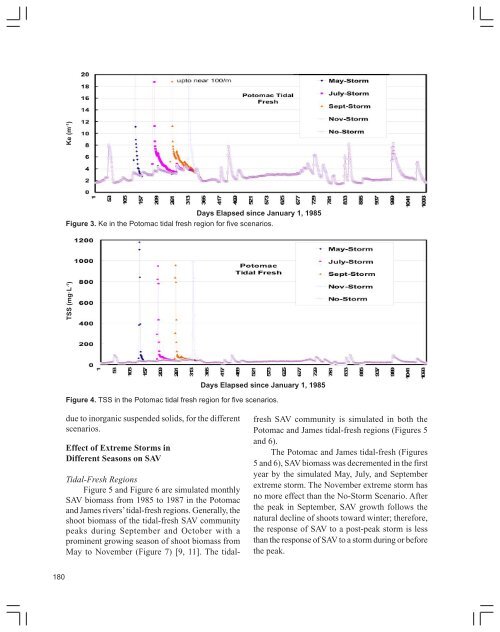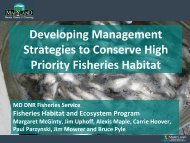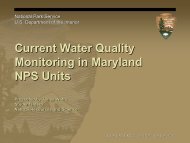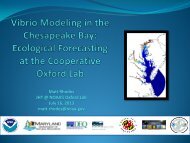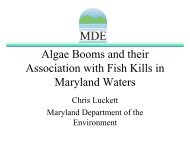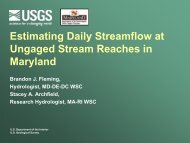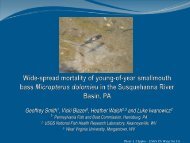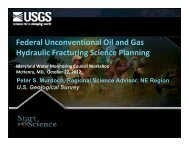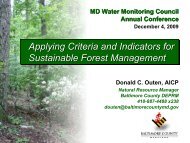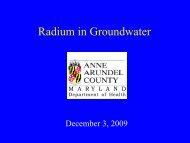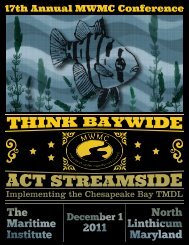Effect of Timing of Extreme Storms on Chesapeake - Maryland ...
Effect of Timing of Extreme Storms on Chesapeake - Maryland ...
Effect of Timing of Extreme Storms on Chesapeake - Maryland ...
You also want an ePaper? Increase the reach of your titles
YUMPU automatically turns print PDFs into web optimized ePapers that Google loves.
180<br />
Ke (m -1 )<br />
Days Elapsed since January 1, 1985<br />
Figure 3. Ke in the Potomac tidal fresh regi<strong>on</strong> for five scenarios.<br />
TSS (mg⋅L -1 )<br />
Figure 4. TSS in the Potomac tidal fresh regi<strong>on</strong> for five scenarios.<br />
due to inorganic suspended solids, for the different<br />
scenarios.<br />
<str<strong>on</strong>g>Effect</str<strong>on</strong>g> <str<strong>on</strong>g>of</str<strong>on</strong>g> <str<strong>on</strong>g>Extreme</str<strong>on</strong>g> <str<strong>on</strong>g>Storms</str<strong>on</strong>g> in<br />
Different Seas<strong>on</strong>s <strong>on</strong> SAV<br />
Tidal-Fresh Regi<strong>on</strong>s<br />
Figure 5 and Figure 6 are simulated m<strong>on</strong>thly<br />
SAV biomass from 1985 to 1987 in the Potomac<br />
and James rivers’ tidal-fresh regi<strong>on</strong>s. Generally, the<br />
shoot biomass <str<strong>on</strong>g>of</str<strong>on</strong>g> the tidal-fresh SAV community<br />
peaks during September and October with a<br />
prominent growing seas<strong>on</strong> <str<strong>on</strong>g>of</str<strong>on</strong>g> shoot biomass from<br />
May to November (Figure 7) [9, 11]. The tidal-<br />
Days Elapsed since January 1, 1985<br />
fresh SAV community is simulated in both the<br />
Potomac and James tidal-fresh regi<strong>on</strong>s (Figures 5<br />
and 6).<br />
The Potomac and James tidal-fresh (Figures<br />
5 and 6), SAV biomass was decremented in the first<br />
year by the simulated May, July, and September<br />
extreme storm. The November extreme storm has<br />
no more effect than the No-Storm Scenario. After<br />
the peak in September, SAV growth follows the<br />
natural decline <str<strong>on</strong>g>of</str<strong>on</strong>g> shoots toward winter; therefore,<br />
the resp<strong>on</strong>se <str<strong>on</strong>g>of</str<strong>on</strong>g> SAV to a post-peak storm is less<br />
than the resp<strong>on</strong>se <str<strong>on</strong>g>of</str<strong>on</strong>g> SAV to a storm during or before<br />
the peak.


